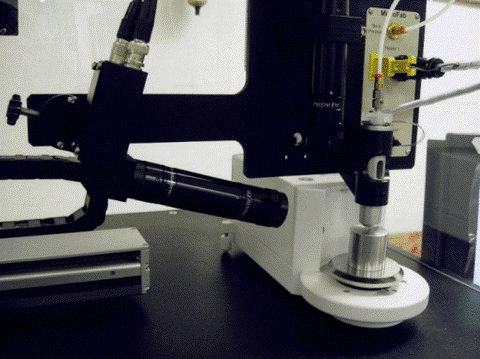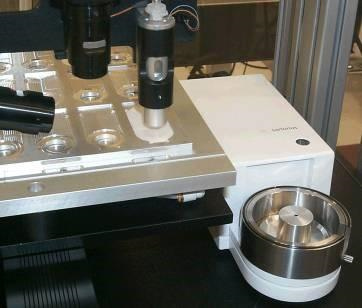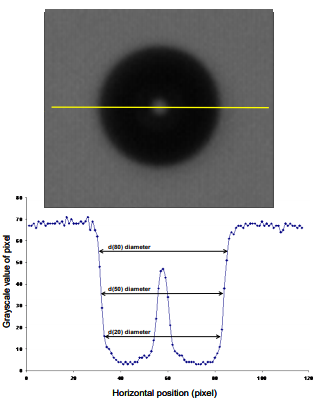Inkjet Droplet Metrology

Gravimetric and Optical Sizing
We continue to develop and improve methods for determination of droplet mass and volume dispensed from a drop-on-demand dispenser that are applicable to a wide range of fluids. Total relative uncertainties in average droplet mass are near 1% while imprecisions are less than 0.5%. Sources of uncertainty (i.e., the corrections for buoyancy, droplet momentum transfer, and evaporative losses during droplet flight) were determined to be insignificant under the operating conditions described. These gravimetric methods permit the use of DOD dispense devices for high-mass-precision additive manufacturing applications, including the reliable manufacture of reference materials for testing performance of trace explosive and drug detectors. While superior in uncertainty to traditional optical methods for droplet mass characterization, this capability is now enabling evolutionary development of optical methods with comparable uncertainties… stay tuned!



Publications
R. M. Verkouteren and J. R. Verkouteren, “Inkjet Metrology: High-Accuracy Mass Measurements of Microdroplets Produced by a Drop-on-Demand Dispenser,” Analytical Chemistry 81, no. 20 (2009): 8577–8584.
R. M. Verkouteren and J. R. Verkouteren, “Inkjet Metrology II: Resolved Effects of Ejection Frequency, Fluidic Pressure, and Droplet Number on Reproducible Drop-on-Demand Dispensing,” Langmuir 27, no. 15 (2011): 9644–9653.
M. Verkouteren, J. Verkouteren and C. Zeissler, “Gravimetric Traceability for Optical Measurements of Droplets-in-Flight,” In Technical Proceedings of the 2013 NSTI Nanotechnology Conference & Expo, Vol.2, Chapter 4. Inkjet Design, Materials & Fabrication, pages 224 -227. CRC Press.
Contacts
-
(301) 975-4901

